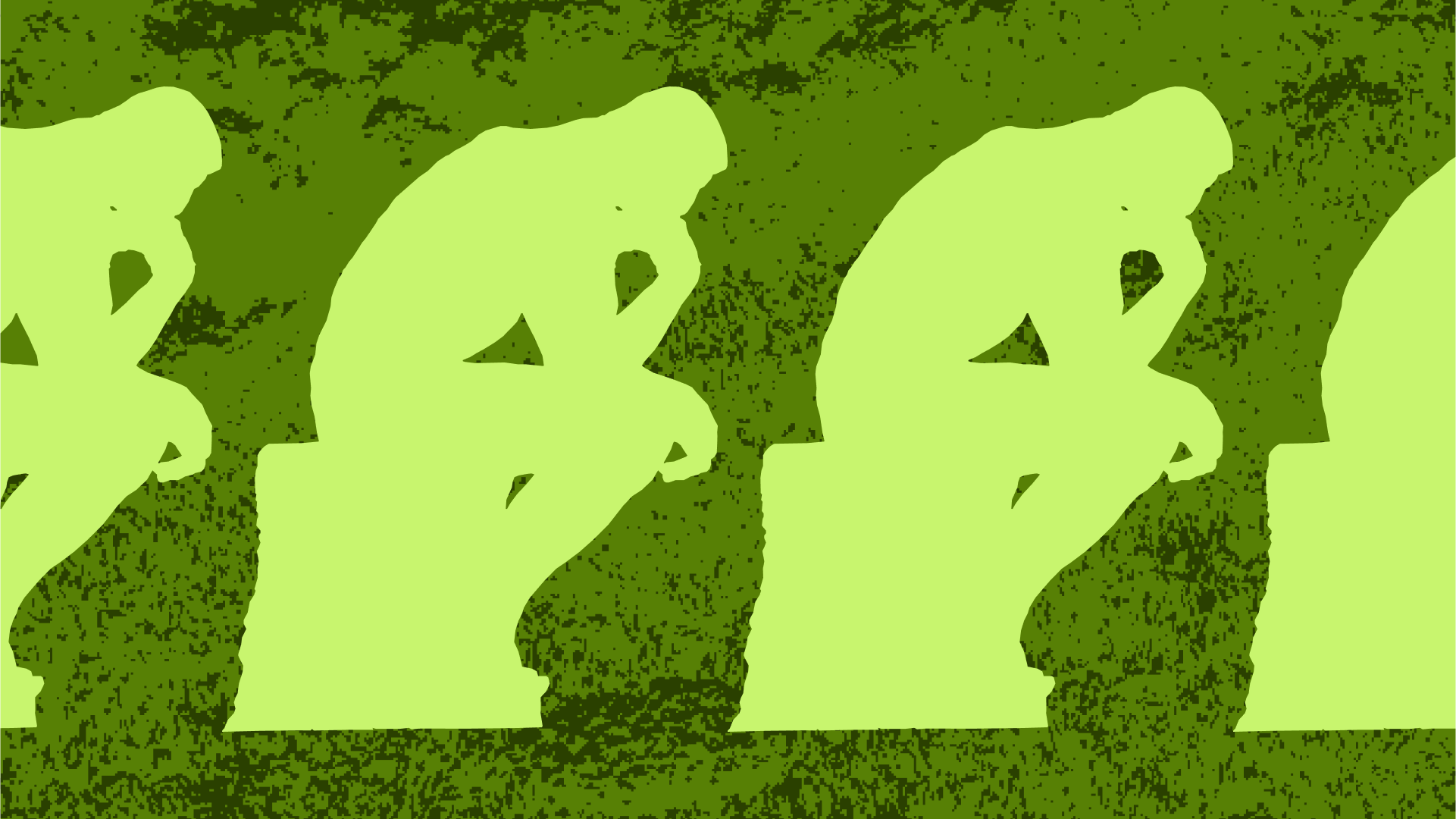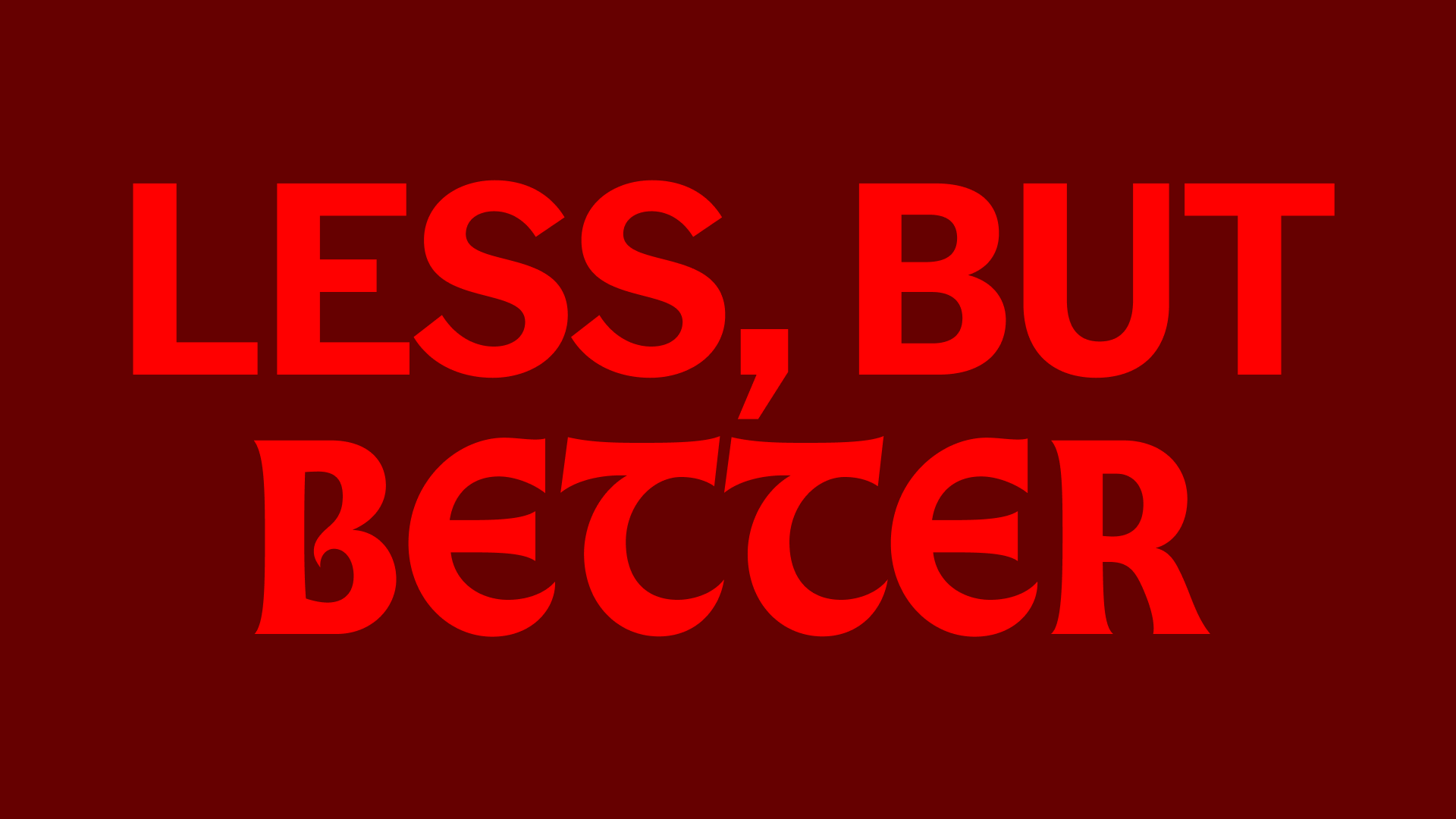A new metric for design beyond ‘growth’
What is “degrowth,” and how can it influence design?

By the time I post this, Hurricane Milton, the fastest Atlantic storm in history to advance from a tropical storm to a Category 5 hurricane, will have made landfall in Florida, barely two weeks after Hurricane Helene tore from Florida to Asheville, North Carolina—a town 300 miles (483Km) from the coast.
This hypergrowth is the new normal, both in nature and society. But as growth happens quicker, we’re given less time to react, and with that comes less quality and more stress. At a certain point, something breaks.
News of Apple potentially steering away from annual updates—at least for some of its products—is a small sign of that breakage, a moment of clarity, a shift we wouldn’t have imagined even five years ago. It may seem like a small step, but it’s a moment of admission that shows that even Apple, today the world’s most valuable company by market cap, has limits.
It also signals the growing consensus that we can no longer see growth as a universal good. Stability is the new growth. In this case, I mean growth as the exponential advancement of technology, the speed of life, and economic growth, not personal, spiritual, or emotional growth.
But this idea still hasn’t grabbed hold in the design industry at large; design is still seen as a way to plan, build, and communicate with the goal of increasing profits and reach. In short, design is used as a growth catalyst. Considering the current state of the world—from the climate to mental health crises—does pursuing endless growth through design avoid a—the?—main goal of design: to make wise, thoughtful decisions?

Rising undercurrents
For years, there has been a surging anti-growth undercurrent. TikTok trends like “quiet quitting,” “act your wage,” and “bare minimum Mondays” only put a name to familiar feelings nearly all of us have had at some point.
Outside of work—and this is purely anecdotal—there’s been a sharp uptick in the number of people I’ve talked to who daydream of moving to a small town and starting some version of a commune—or at least communal housing. Various friends have contacted me about moving to Barcelona to escape the inflated prices of the US and Northern European countries.
In economics research, ‘degrowth’ has existed since at least 2013. A concept in part defined by the voluntary winding down of ‘extraneous’ sectors, it has formed, thanks in part to a sub-discipline called ‘ecological economics,’ which foregrounds issues like “intergenerational equity, irreversibility of environmental change, uncertainty of long-term outcomes, and sustainable development.”
With the worsening climate crisis, these undercurrents have become visible. Degrowth as a solution has exploded into relative popularity, or it has at least moved from the ‘innovators’ to the ‘early adopters’ phase, with discussions popping up on various news channels, editorials, and newspapers.
Anti-capitalism and capitalist critique—barely mentioned in mainstream culture in the mid-aughts and twenties—have also caught on because of the system’s increasingly apparent ties to growth and unsustainability. Even Greta Thunberg, one of climate change’s most prominent spokespeople and a media favorite, has transitioned toward a more anti-capitalist and anti-colonial ethic over the past few years. We’ll see how that affects the media’s coverage of her.
Degrowth and design
So what does ‘degrowth’ mean besides a casual reversal of the social system we’ve grown accustomed to over the past few centuries? 🫠
While I can’t describe all of the ins and outs here—for that, you may have to read a book like Less is More or, more broadly, Doughnut Economics—I want to talk about some of the central tenets and how they could benefit design.
What is degrowth?
The main idea is something many can agree with: our obsession with growth—and in particular, with quantity over quality of growth—causes widespread destruction, human suffering, and waste. For society to continue without major catastrophes, we’ll need to change our entire conception of what growth is good for. Namely, we have to decide when not to grow, on purpose.
Cool, simple enough. 🥹 But how?
The first aspect is restructuring how we produce our products and services, with the idea that shared risk exploits less. Many things change when the main goal isn’t more GDP: power relationships, cash flow, wealth sharing, and—a polarizing feature of degrowth—decision-making processes about what to produce and how. It’s no surprise that cooperativism plays a big role in degrowth, but anti-colonialism may play an even bigger one. Through this lens, it’s vital to not only acknowledge but undo the power dynamics of the colonial and post-colonial world. “Justice is … key to solving the climate crisis,” says Jason Hickel, author of one of the more popular degrowth manuals.
Based on this first element, degrowth proponents also say the purpose of work should be realigned with social well-being. Right now, the profits of growth are reinvested in more growth, but they could just as easily be invested in what people need to live well: healthcare, education, parks, good jobs, and, crucially, free time.
When we’re busy—as we ever-increasingly are—we fill our free time with dopamine-rich and carbon-intensive activities like long-haul flights, on-demand food delivery, and retail therapy. Studies show that “when people are given time off, they tend to gravitate towards lower-impact activities: exercise, volunteering, learning, and socializing with friends and family.”
Finally, community and relationality become guiding principles that indicate that we only exist because of our relationships with other humans and non-humans. This is the opposite of what a growth-based system asks: that everyone be a separate, marketable consumer. Likewise, our mind doesn’t simply exist in the brain, ready to be exported like an .mp4 to another body when we die. It’s an inseparable part of our embodied experience that wouldn’t exist without the rest of our senses.
In short, degrowth helps change our ‘social purpose’ from market-driven to community-driven.
What does this look like in design?
Transition from techno-optimism to socio-optimism
Instead of seeing all tech progress as inherently good, we can begin to view it through a more conscious social lens. Rather than being first to a new technology, we can take a broadly Apple-esque approach: they may not be first to do something, but when they do, the bar for quality is set high (except for their new Camera Control button 🥹).
What does X Technology do for humanity? How can we use Y Technology to create new social relationships? Should we promote Z Technology if we know its popularity will be socially detrimental? How might we create value that can’t be commodified?
These questions imply a shift from the designer as a ‘salesperson,’ as Ruben Pater says, to the designer as a social actor. They also help us avoid losing credibility by uncritically promoting new, overly-hyped technologies that lack substance.
Embracing complexity instead of simplicity
Modern cultures tend to simplify. They flatten time and space. This is ostensibly to make life easier and create more accessibility. I won’t deny how comfortable this can be, but ultimately, that same ease creates a monoculture where everything is a copy of everything else. Even new social media—Read, Cara, etc.—rehash the same like-comment-subscribe-timeline paradigm that’s been the norm for over a decade. It seems that modern culture tends to flatten culture itself.
Instead, designers could embrace the beauty of complexity by embracing degrowth. What if we show the ‘seamfullness’ instead of the seamlessness in digital applications, so people know where their data goes and what it’s used for? What if we lean into the beauty of local cultures and designers instead of applying a ‘global’ aesthetic? What if we let messy, unproductive, but culturally rich systems flourish?

Progress and the standard of living
“But what about progress and raising the standard of living?”
This is a common counter-argument to any critique of growth or productivity. If progress comes from growth, then growth is not only necessary but inherently good.
The catch is that, often, social progress doesn’t come from economic growth. Indeed, in the fifteenth through eighteenth centuries, a period of massive economic growth, there was a regression in living standards for nearly everyone except the upper classes. Benefitting from extreme enclosure and land appropriation, where many people were forced into cities to survive,
Industrial capitalism took off, but at extraordinary human cost. Simon Szreter, one of the world’s leading experts on historical public health data, has shown that this first century of the Industrial Revolution was characterised by a striking deterioration in life expectancy, down to levels not seen since the Black Death in the fourteenth century. In Manchester and Liverpool, the two giants of industrialisation, life expectancy collapsed compared to non-industrialised parts of the country. In Manchester it fell to a mere twenty-five years.
Much progress in life expectancy and well-being is not due to economic growth but to public works and social movements that demanded more of their governments. Left to the market alone, economic growth can worsen public health outcomes.
It’s not growth or capitalism that creates innovation; it’s human nature. The forty-hour work week, child labor laws, social security, and public sanitation all became normalized in opposition to what the market wanted. Ironically, the market is again threatening some of these victories.
Degrowth has also, at times, been misconstrued as a totalitarian approach to sustainability—after all, who decides what industries are unnecessary?
This argument might seem superficially reasonable until you realize that a small group of people already decide what industries matter and grow. But they do so through undemocratic means. In the US, for example, corporate owners—through the sway of their lobbyists—have the power to decide that a functional public transit system or universal healthcare shouldn’t exist.
This conflation of degrowth with conservative politics ignores that degrowth is about intentional, democratic decision-making and reintegration with the rest of nature. Essentially, degrowth is sustainable design.
So again, we can no longer see growth as a universal good. It needs to be replaced—at least in the minority world—with stability. This means a drastic change in the way we approach design, but at the same time, it means returning to design’s basic definition: to make wise, thoughtful decisions.
Pushing the industry and your practice forward may mean acting on some of the questions above or simply talking about these ideas with friends and colleagues who may be interested.
Most of us are dying for a change, and degrowth could help. While capitalism and exponential growth may seem ‘natural,’ the reality is that they’re part of a young, volatile system waiting to be disrupted.
That's all for this week! Thanks for reading.
To help these ideas spread, please consider sharing a link to this issue or the entire newsletter with your friends or on social media.





Discussion